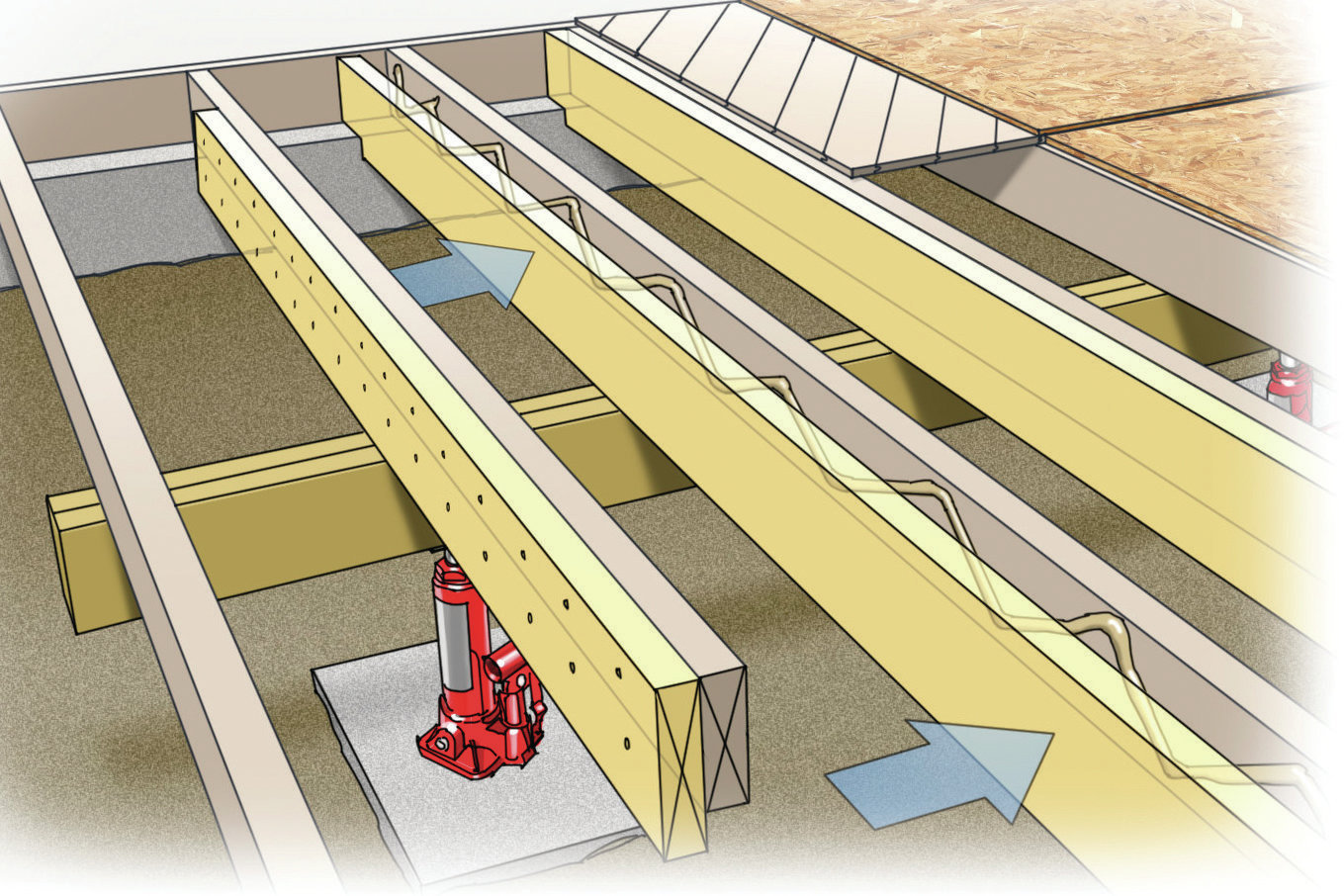If you add joists between existing joists you have to make sure you get a good connection between the joist and subfloor or squeaking may result.
Add joists between existing floor joists.
The problem is that the existing joists are 19 apart.
Worse if a gap exists between joist and subfloor the floor may still flex.
Purchase the type of lumber that matches the width of the existing joist.
This is the end that meets the existing house and is kind of poorly secured in my opionion.
If the overall structure of the deck is still in good shape then yes you can add new joists between the existing.
Even if your joists already have a row of bridging at the center of the span adding a row on each side of the existing bridging will stiffen the floor.
So i ve got 2 6 floor joists spanning 15 feet.
Measure the width and length of the existing joist.
Generally newer home floor joists are made from 2x8s or new engineered i beams older homes however may have 2x6s instead.
Then attach the sister joist using three 16d common nails driven every 16 in.
While it is a good idea to replace rotted material with 2x8s it may require some notching to fit between the sub floor and ledger board.
This solution doesn t make the floor as stiff as the other solutions but since it s relatively easy and inexpensive you might want to try it first.
If there is rot in the existing framing you re better off to start from scratch with all new materials.
It s kind of old school.
I would use construction adhesive on top of the joist to assure a gapless connection.
When the sagging joists are level apply a generous bead of construction adhesive to the existing joist.
Of the existing joist.
Nail the new joist to the existing joist with two rows of 10d to 16d nails spaced 6 in.
My plan is to add 2x8 joist in between the existing joist for a total of 4 additional joist.
Most new construction uses 2 by 8 lumber for joists although 2 by 6.
But it s usually best to run the sister joist over the entire span.
My crawlspace has six vents under the floor and i want to seal them up.
Use a sledgehammer or a pry bar to force the bottom of the new joist along the mudsill and center support beam of the floor system or the opposite mudsill on short spans until it s flat against the existing joist.
Driving 16d common nails in old hard wood is difficult.
I read it doesn t need cross ventilation.
And i d like to know if i rip some inch plywood and sister it up against the 2x6s and glue and screw it if that would be sufficient.
Close up of the far end resting probably 8 on the ledger or what ever it s called.










